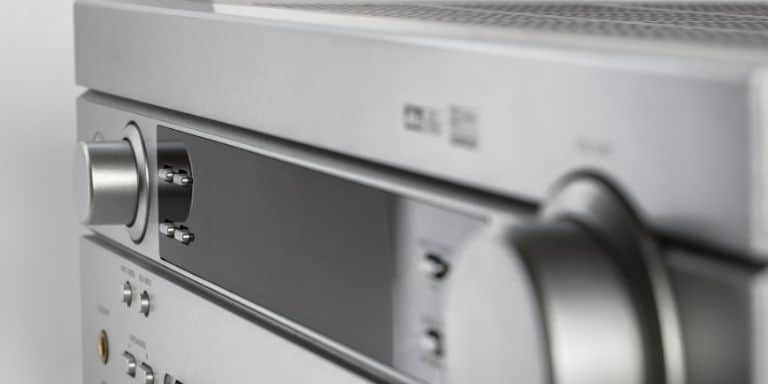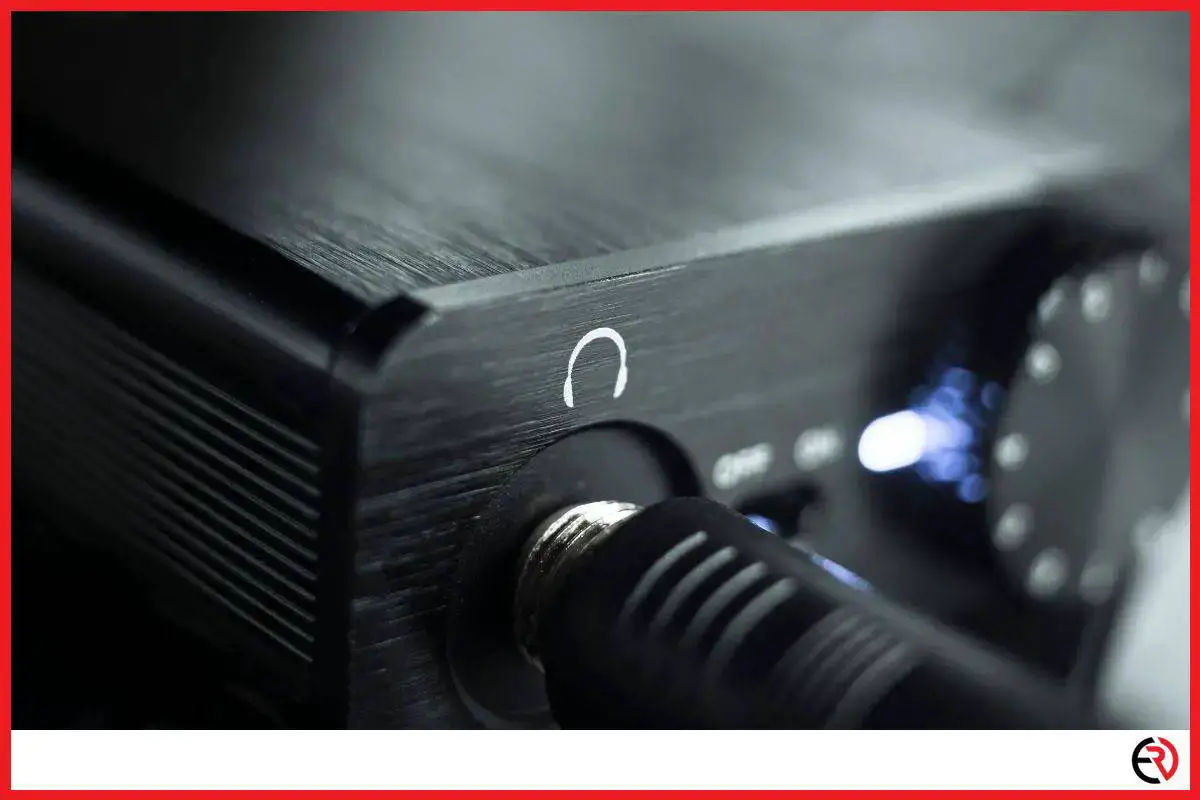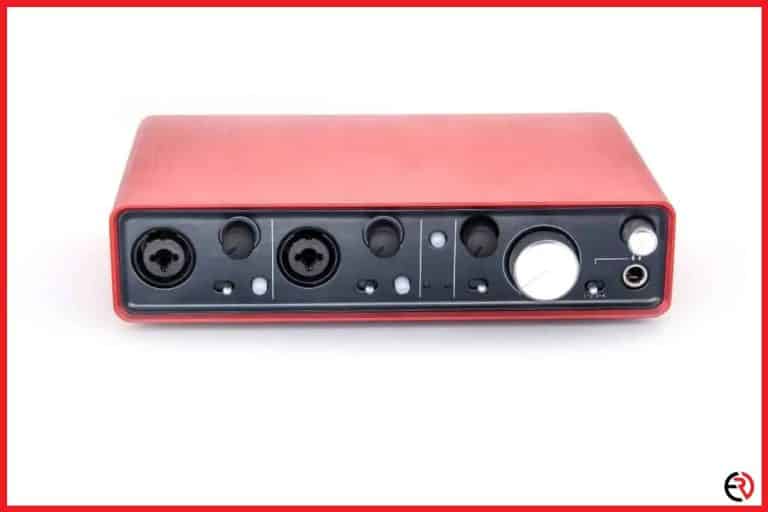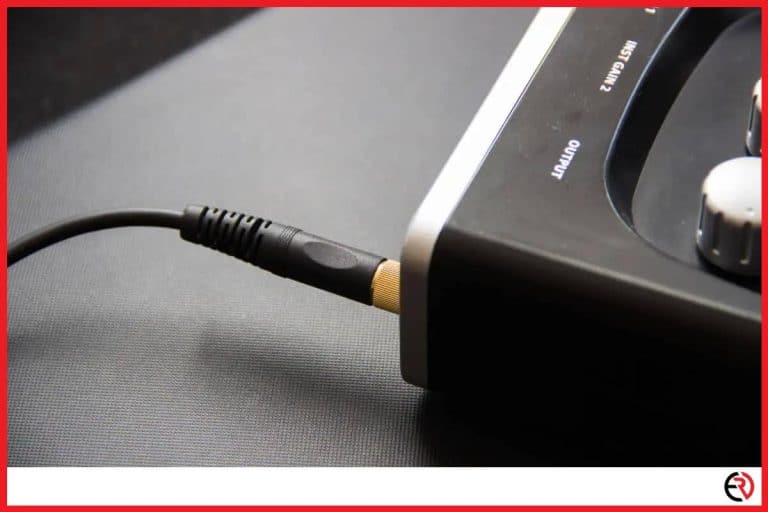Amp vs DAC (What is the Difference?)
This post may contain affiliate links which means that, if you choose to make a purchase, I may earn a small commission at no extra cost to you.
If you have just started your journey as an audiophile, it can be confusing to learn about terms like DAC or amp. Why can’t you just plug your high-end headphones into your laptop and enjoy good music? When do you need an amp or DAC? Is it okay to get just one or should you get a combo? Questions like these may pop up in your mind and it can fill you with confusion. In this article, we have explained the difference between an amp and a DAC in simple terms to help you understand the subject clearly.
A DAC (digital to analog converter) is a device that converts digital information into an analog signal that can be used by an audio output device to produce sound. An amp (amplifier) is a device that amplifies (boosts) the analog output signal to create louder volume.
Most people assume that an amp or a DAC helps to produce higher quality music. However, it is more suitable to say that these devices help to fix problems. If you are already satisfied with the quality of music produced by your favorite headphones or speakers, chances are that purchasing an external DAC or a portable amp wouldn’t create much difference.
However, if you are sure that your high-end audio hardware is not performing at its best, combining them with a high-quality amp or an external DAC can produce wonderful results. Now, before you start researching the best external DACs and amps within your budget, read the full article to understand whether you really need any of those and how to make a good purchase decision.
When do you need an Amp?
You need an amp when your sound source doesn’t produce enough power to drive your headphones. To put it more simply, plug your headphones into your smartphone, laptop, or any other sound source and crank the volume up to a decent level. If the sound produced is loud enough for your taste and there is still room to increase the volume, you don’t require an amp. However, if the sound output of your headphones is not loud even at full volume, you need an amp to bring out their full potential. Another thing to note is that Bluetooth headphones don’t need an amp as they have in-built amplifiers.
Generally, there are two specifications you need to look at to determine whether a headphone would require an amp to function – impedance and sensitivity. Impedance is measured in ohms. Any headphone with an impedance rating of less than 32 ohms can be easily driven by smartphones or laptops.
For headphones with an impedance rating of over 32 ohms, it is crucial to purchase a good amp to bring out the full potential of your headphones. High-end headphones with impedance ratings in the hundreds would be barely audible and sound even worse than normal headphones if you plug it into a regular sound source without a dedicated amp.
Sensitivity is measured in decibels of Sound Pressure Level per milliwatt (dB SPL/mW). Basically, the higher the level of sensitivity, the easier it is to drive the headphones. However, a headphone with higher sensitivity can pick up unwanted noises and ruin the music listening experience.
Audiophiles buy dedicated amps in order to power expensive high-end headphones. These products produce better quality sound because they have better drivers but also need more power to run. With additional power, such headphones not only get louder but they also scale well, i.e. the more power you feed them, the better they would sound. For eg., you would notice more fullness on the low end and more detail on the top end.
In most cases, you simply need a good amp to improve your audio experience to the next level if you already have a good pair of headphones. If you try to use an amp with normal headphones or those that have an impedance level of less or equal to 32 ohms, you won’t experience any boost in audio quality. In fact, it can produce the opposite result as the extra loudness in volume can distort the sound of low-quality headphones.
When do you need a DAC?

A DAC is a basic but essential component that is found in every sound source such as the motherboard of your PC, laptop, or even your smartphone. Without a DAC, you simply cannot produce sound from digital devices. Back in the old days, the in-built DACs found inside audio hardware such as MP3 players or even laptops were not made of good quality. They couldn’t keep up with higher-end headphones or speakers and were not suitable for high-bitrate listening.
To make things worse, those were shielded improperly which introduced static noise, unwanted feedback, or made the output crappy. To overcome such problems, people started to buy standalone DAC units. Technology has improved a lot since that era and digital music has improved dramatically in quality since that period.
So, the only scenario where it is necessary to buy an external DAC nowadays is when your sound source is introducing unwanted noise or is incapable of playing audio files with high-bitrates. Consider this scenario – you bought an amp and connected it to your premium headphones. Now, the sound quality and loudness of your headphones have been boosted to a whole new level. However, now you have also started to notice problems with unwanted noise such as hiss, hum, pops, crackles, etc. This can happen if your onboard audio solution is flawed in some way or has a lot of interference. Pairing the amp with a good DAC can help you get rid of all those problems.
The price of a DAC can vary a lot and the higher-end DACs are made with better quality components to produce better sound and have better designs. In this respect, better sound means more sound clarity, more definition, and less interference or unwanted noise. Just like an amp, you won’t benefit if you buy a DAC for Bluetooth headphones because those have in-built DACs.
Should you get an Amp/DAC combo or buy separately?
Most people would be happy to purchase only an amp because it would fulfill their expectations. However, in certain cases, you have to spend a little extra for getting an external DAC unit to solve all problems. An Amp/DAC combo is a single piece of hardware with both an amp and a DAC inside it. These are cheaper than purchasing each type of unit separately. The amp and DAC inside such combo devices are optimized by the manufacturer to pair up well with each other. Another benefit to an Amp/DAC combo is that they are usually much more portable due to their small size.
The benefit of purchasing each unit separately is that you have a lot of room for experimenting and manipulating the sound. For eg., you can try connecting your DAC to different amps to hear how they sound and figure out a setting that appeals the most to your senses.
So, if you are limited on budget and just want a simple solution, an Amp/DAC combo would be more suitable for you. On the other hand, if you have money to invest, like to experiment with sound, and don’t mind the size of the device, a separate DAC and amp units would be better for your needs.
What to look for when purchasing an Amp or a DAC?

Not all amps may be suitable for your headphones. You have to look at the power output capability and the impedance of the amp. The higher the power output of an amp, the more power it can deliver to drive headphones with high impedance. Another factor to take note of is impedance matching. Typically, the impedance rating of your headphone should be about 2.5 to 8 times higher than the impedance rating of your amp to produce the best quality sound output possible.
When purchasing a DAC, you can look at the price range and features of the product such as wireless capability, power draw (zero for USB DAC), and combos. However, if you want to plug headsets into a DAC, it is crucial to get a DAC that also supports audio input in the form of a 3.5 mm jack instead of just supporting audio output. Remember, the sound improvement produced by an external DAC hits the threshold of diminishing returns very early in the price range.
Conclusion
Unless you plan to listen to music using audiophile-grade headphones, it is unlikely that you would need a dedicated amp. However, if you have recently purchased the high-end Beyerdynamic or Sennheiser, it would be sufficient to power them only using a good amp.
In most cases, you won’t notice an improvement in sound quality by purchasing an external DAC if you are not suffering from audio issues. However, if you have issues with your audio quality in the form of unwanted noises or stutters, a DAC can solve all those problems. Lastly, there is no need to purchase an amp or a DAC if you use Bluetooth headphones.







